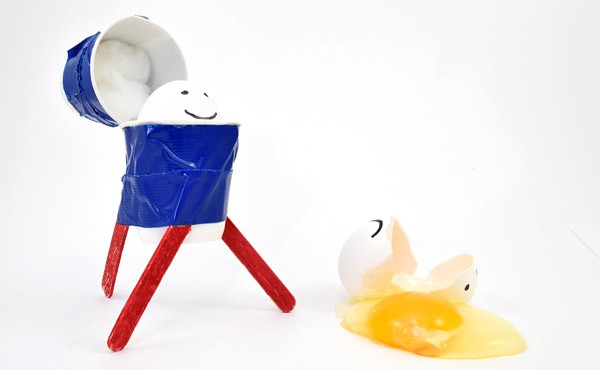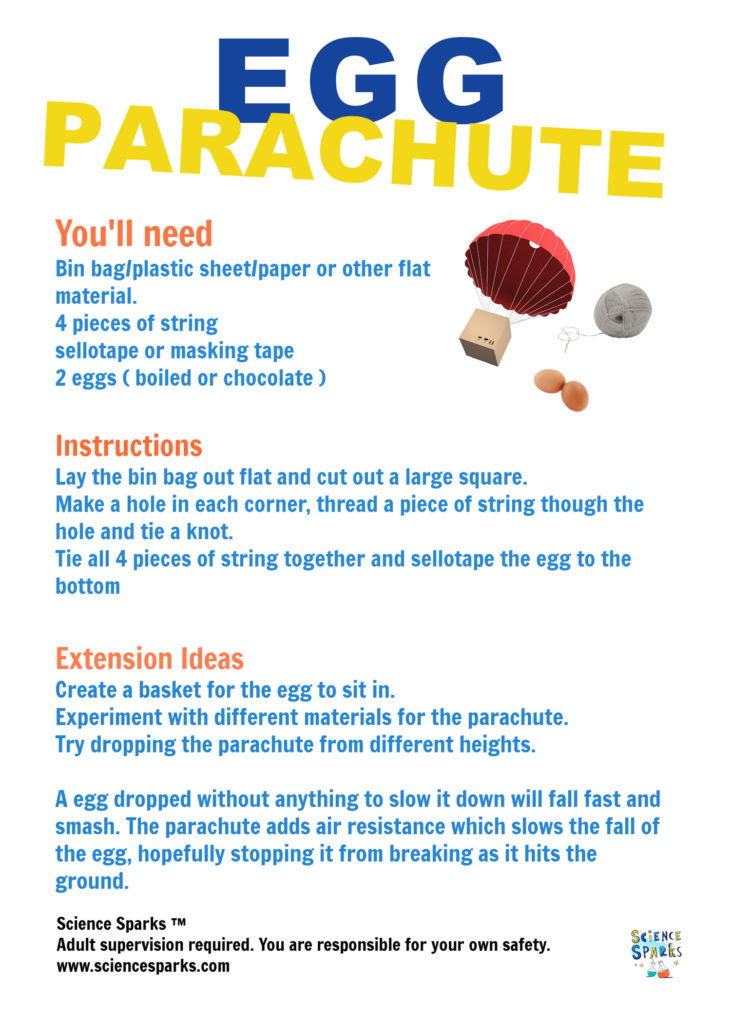


Testing and observing your design allows you to identify weak spots that can be fixed in future designs. by using a parachute), and spreading the impact out over a large surface or multiple points (as opposed to a single leg or corner, which concentrates the force all in one place). This means slowing the lander down as much as possible to begin with (e.g. In addition to protecting the egg, a successful re-usable device will need to minimize and distribute impact forces when landing. That approach doesn't work if you want to re-use the device dozens of times! If you only need to drop your device once, you can design it so that some of the materials break, absorbing energy and protecting the egg. Many successful traditional egg drop devices might intentionally rely on this behavior. Taped or glued joints could start to come apart, materials like straws or popsicle sticks might start to bend or snap, and cushioning materials like cotton balls might become compacted, decreasing their effectiveness over time. You might have found this project surprisingly difficult! Even if the egg survives the first few drops, you might start to see wear and tear on your lander. Use soap and water to clean up any raw egg that spilled on surfaces like floors or counters. Throw away any materials that are contaminated with raw egg.


 0 kommentar(er)
0 kommentar(er)
